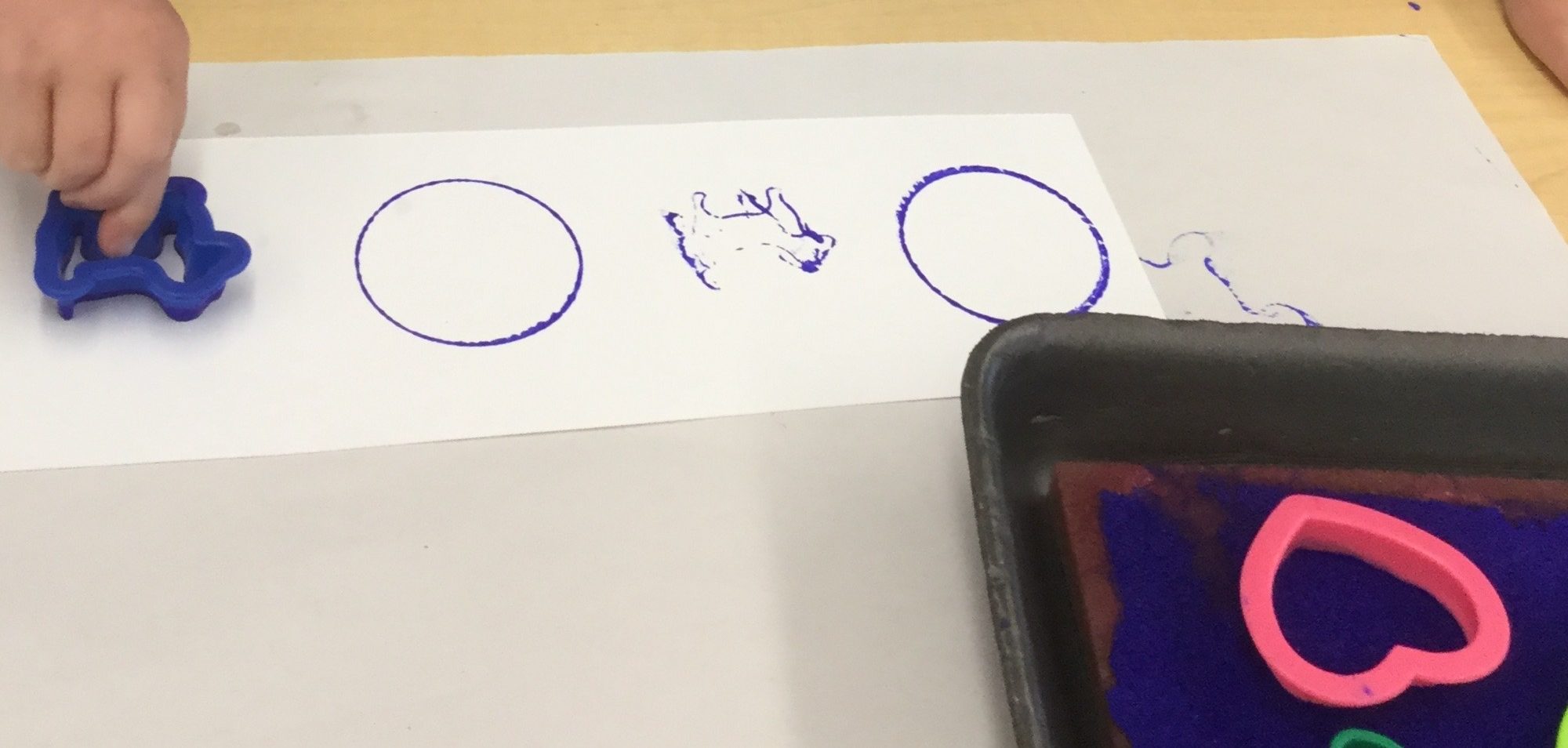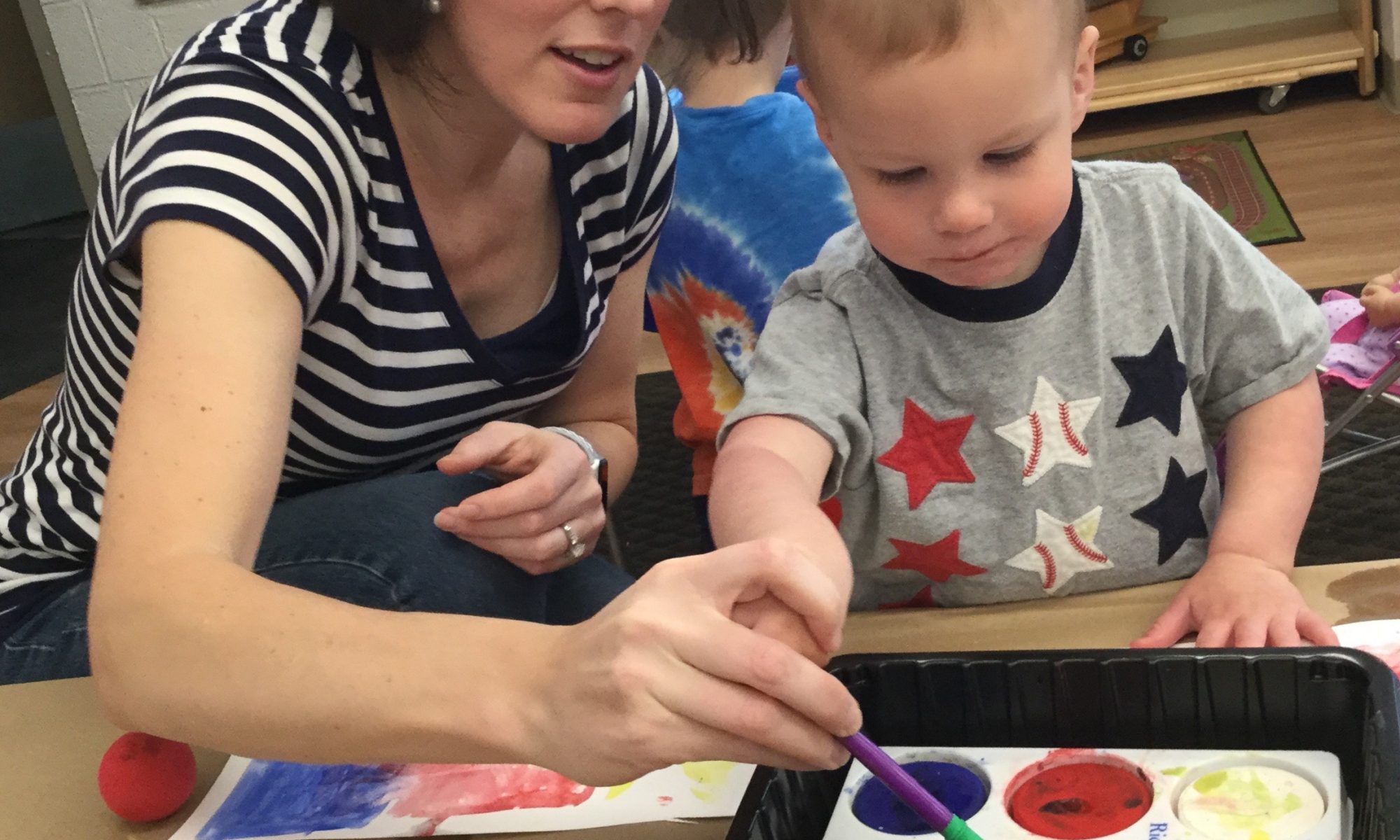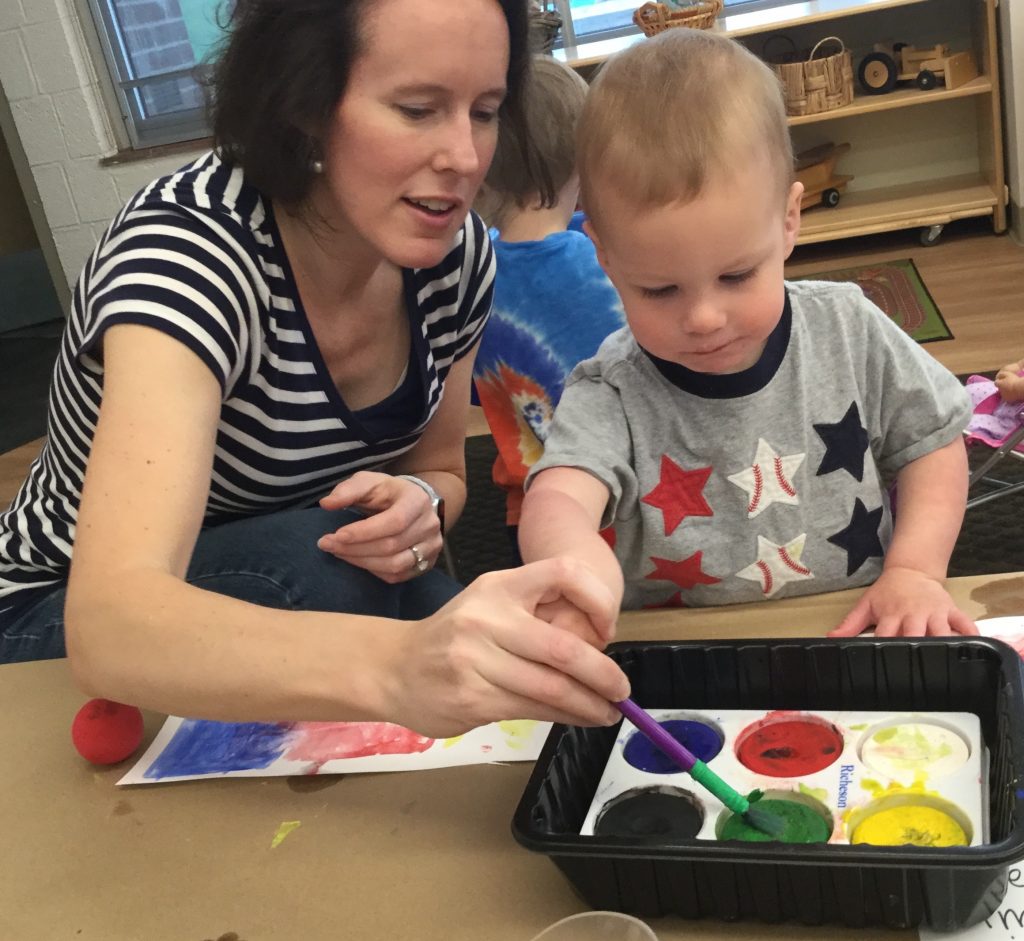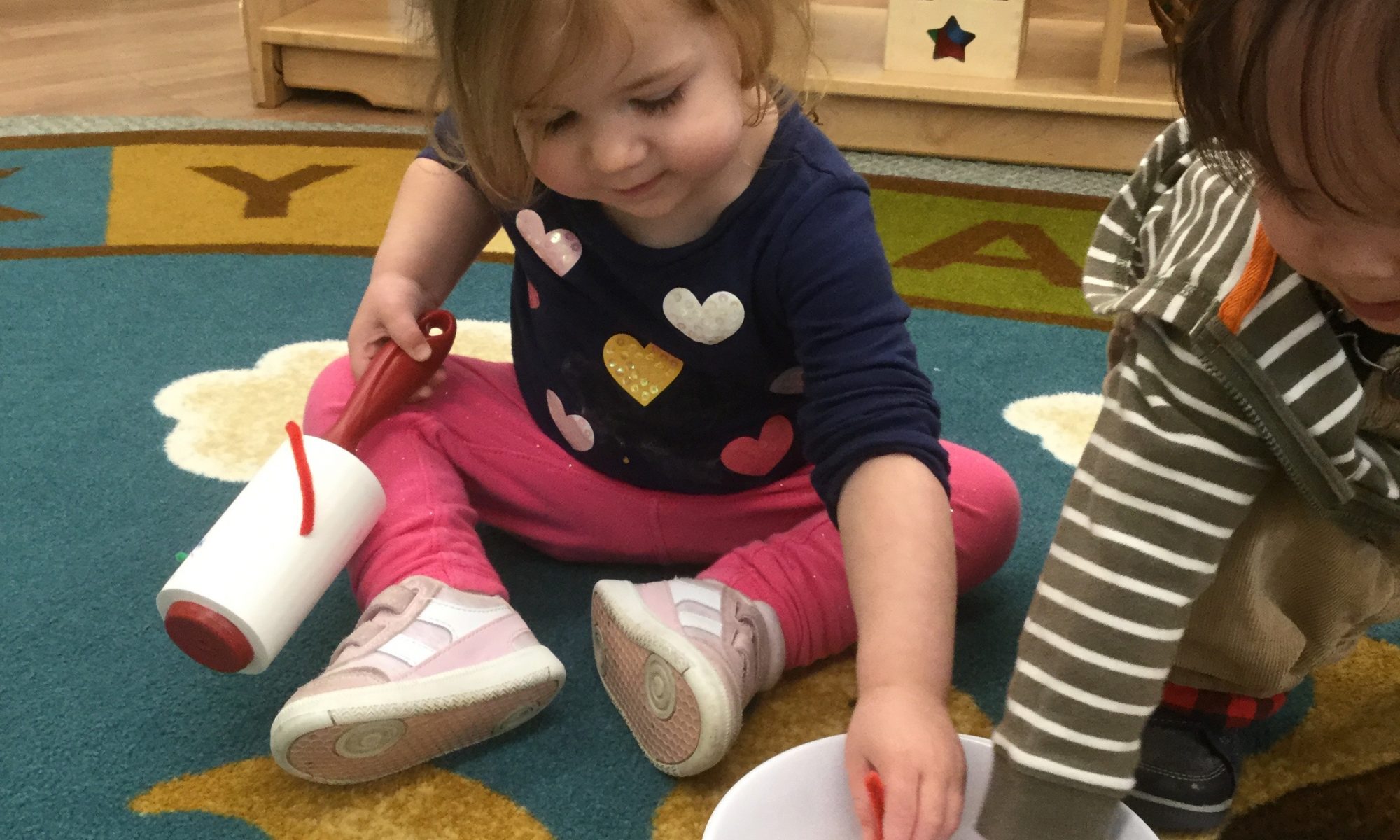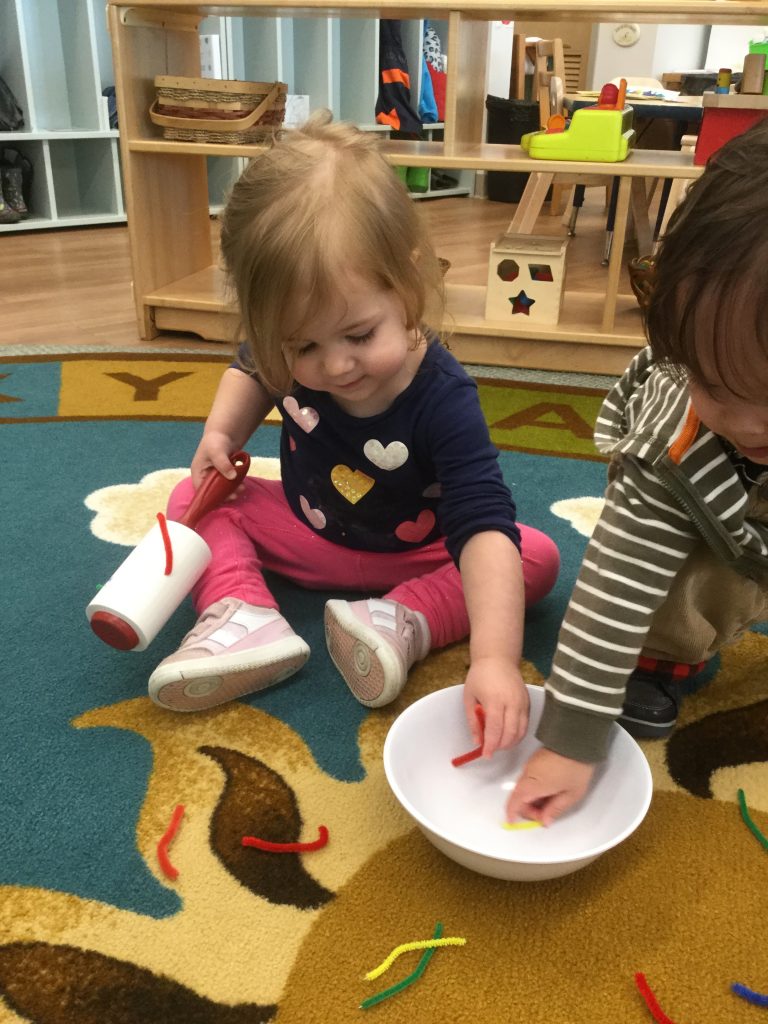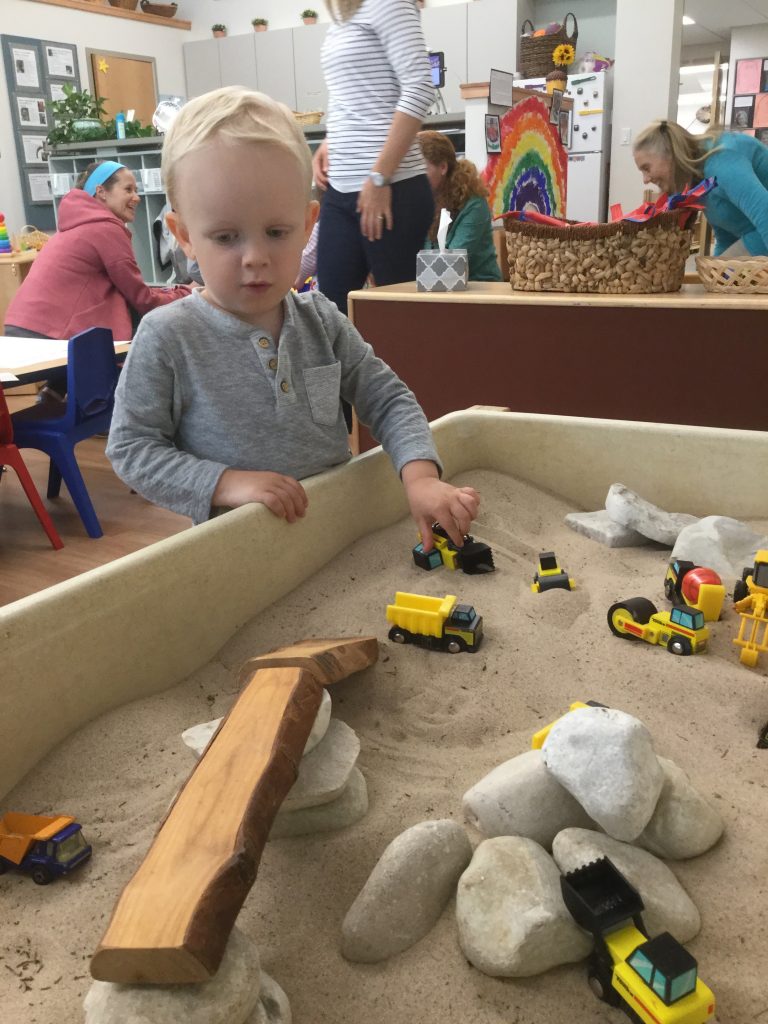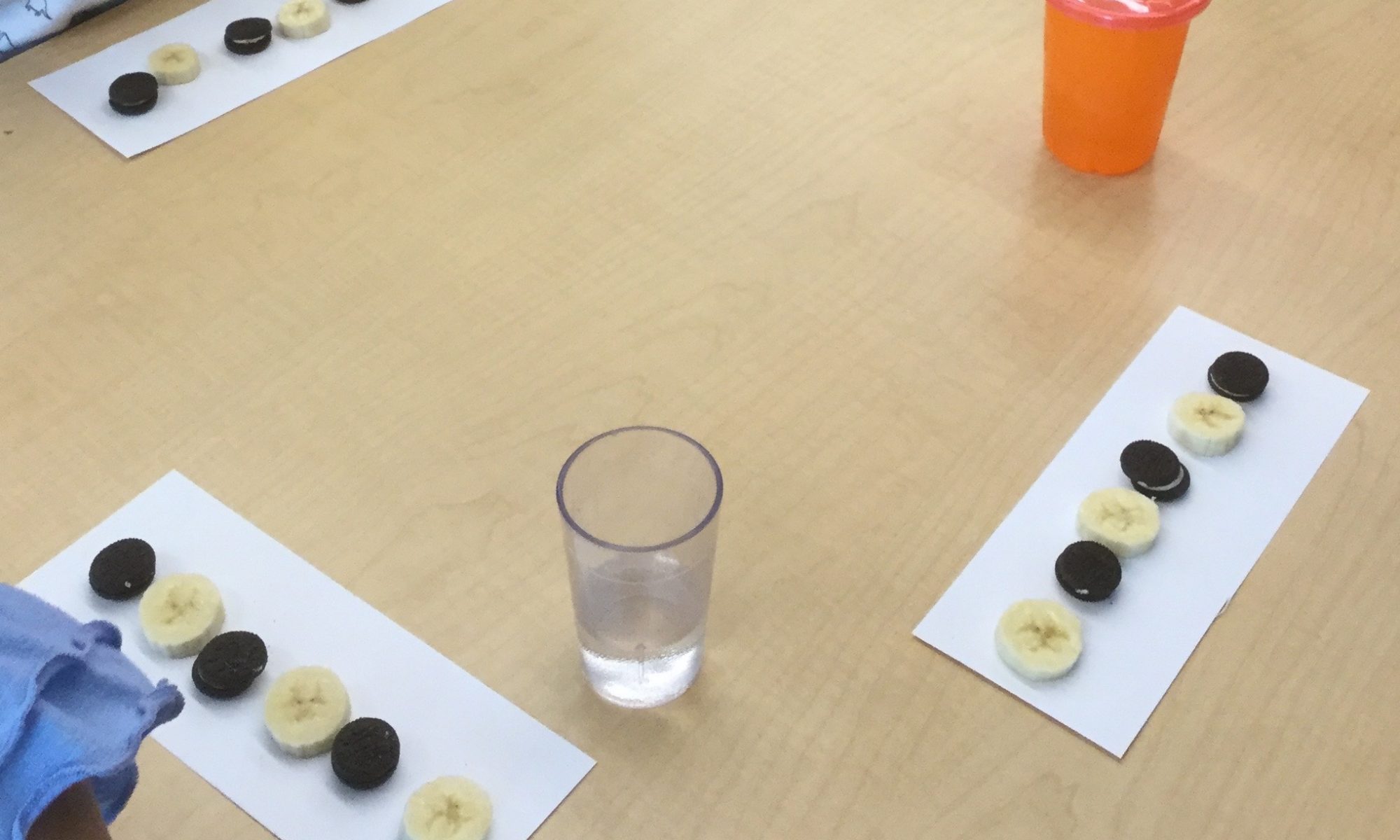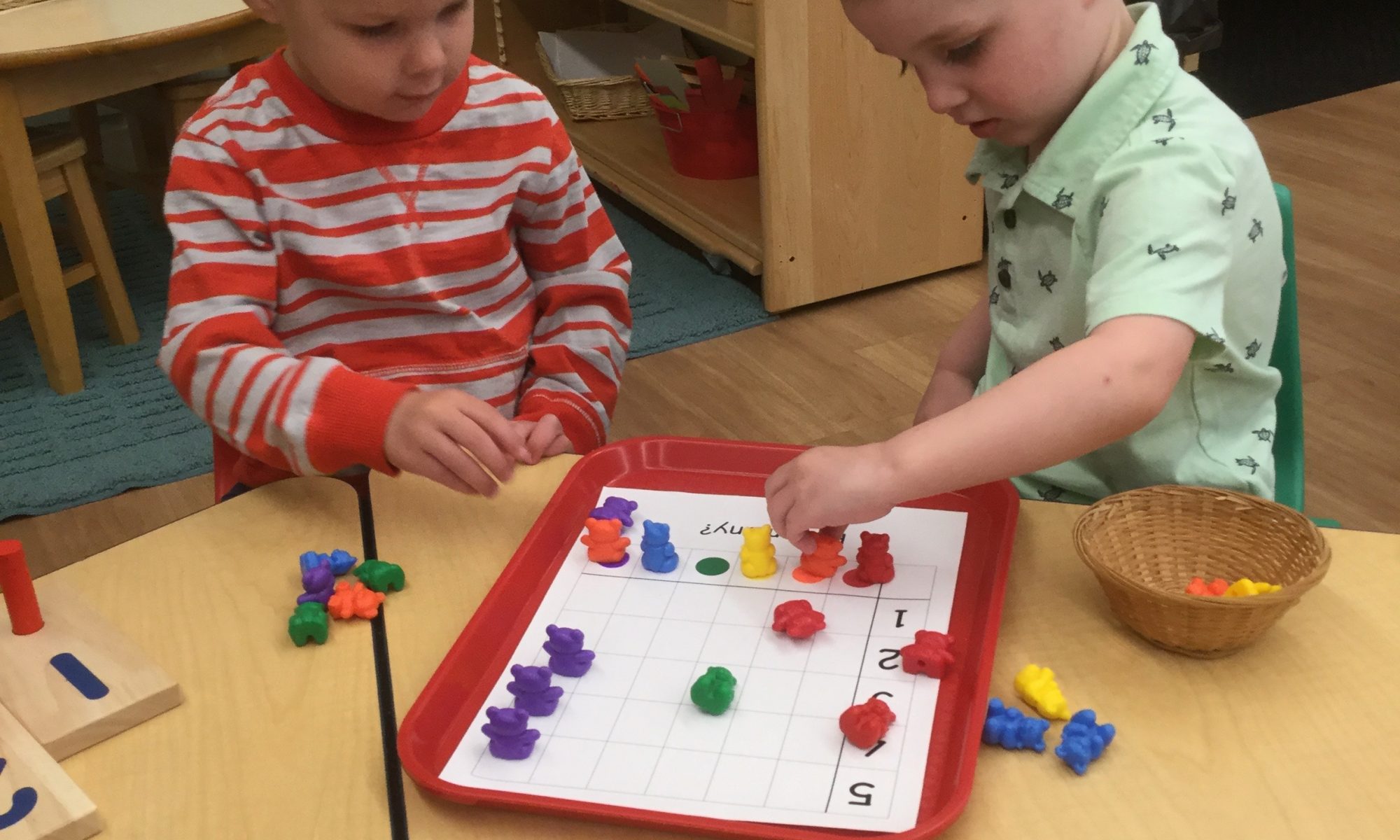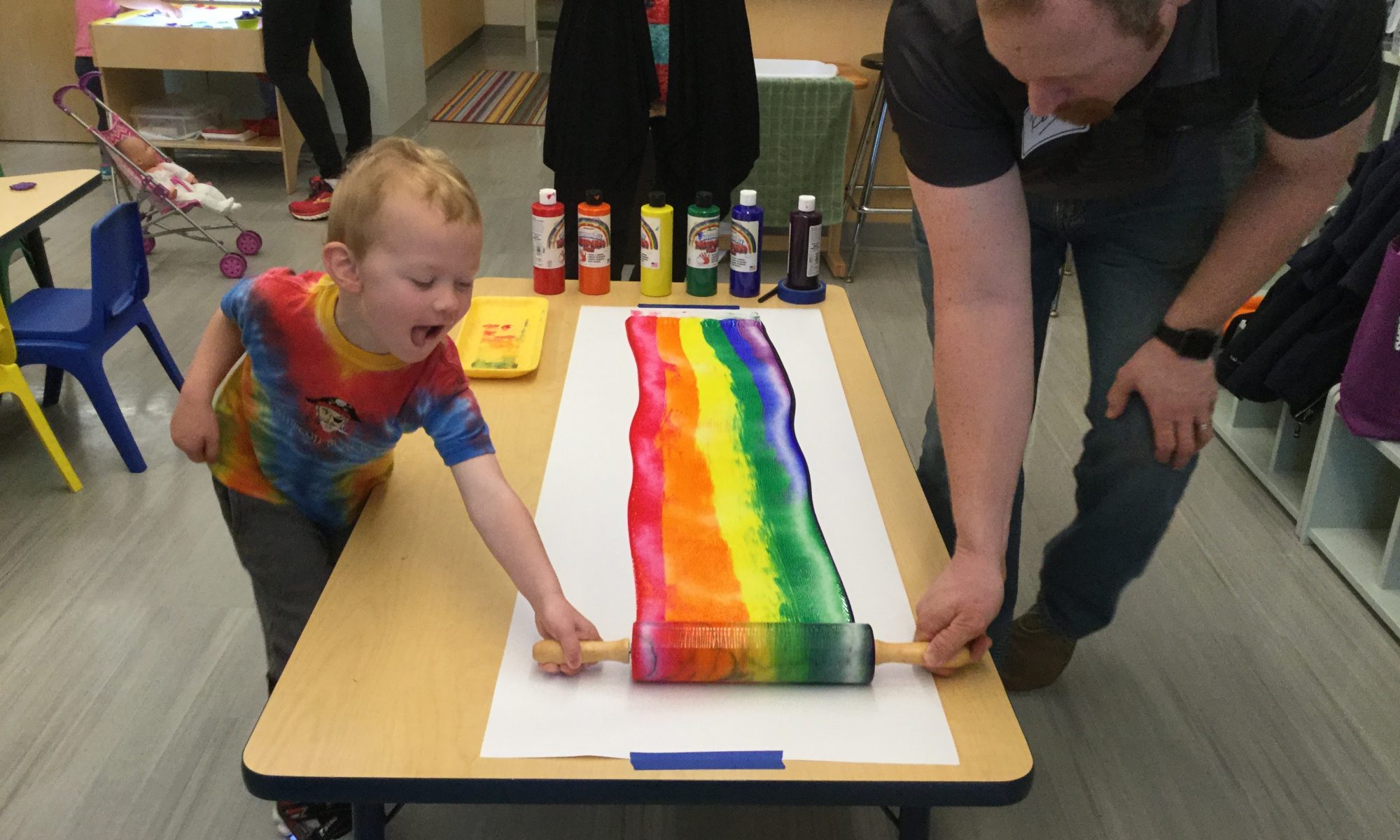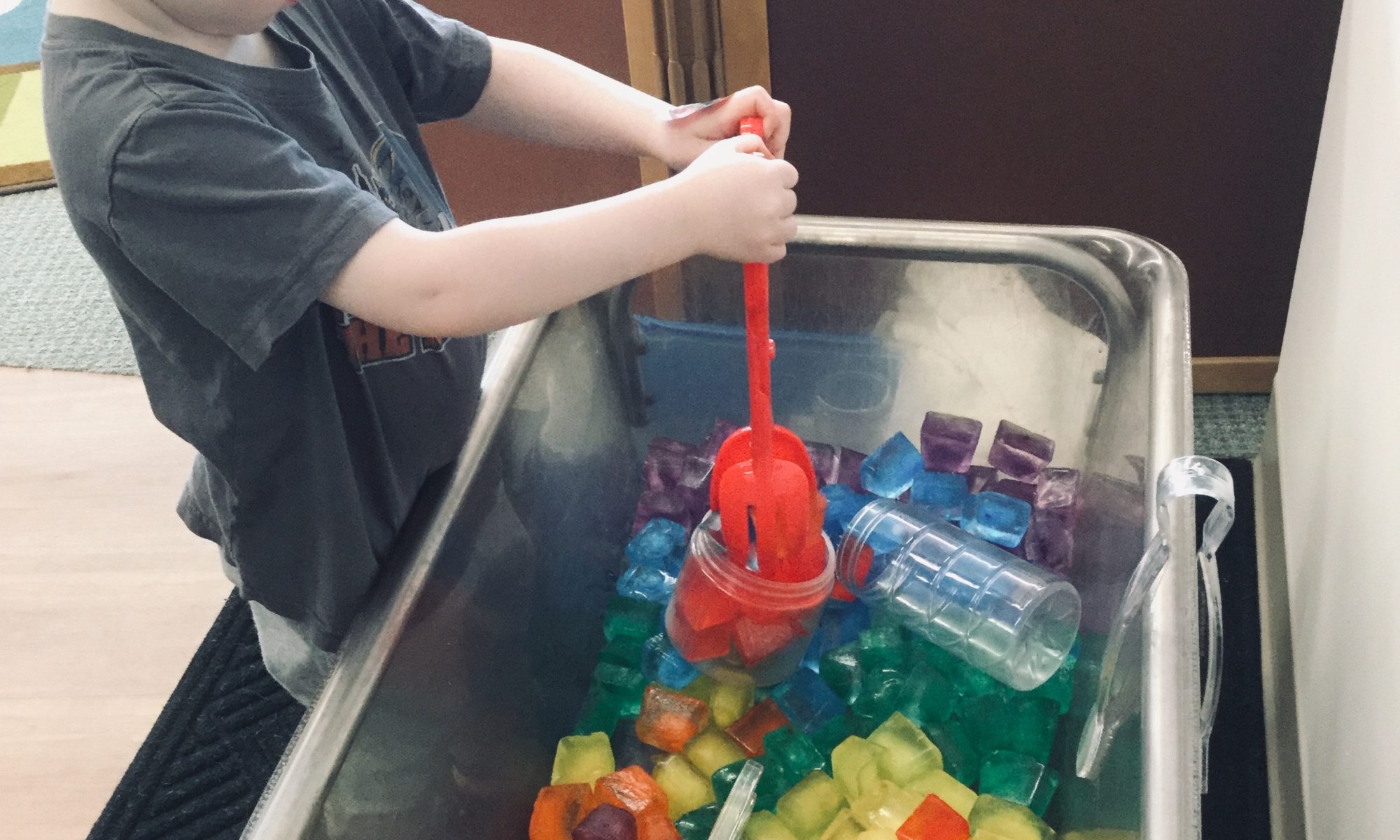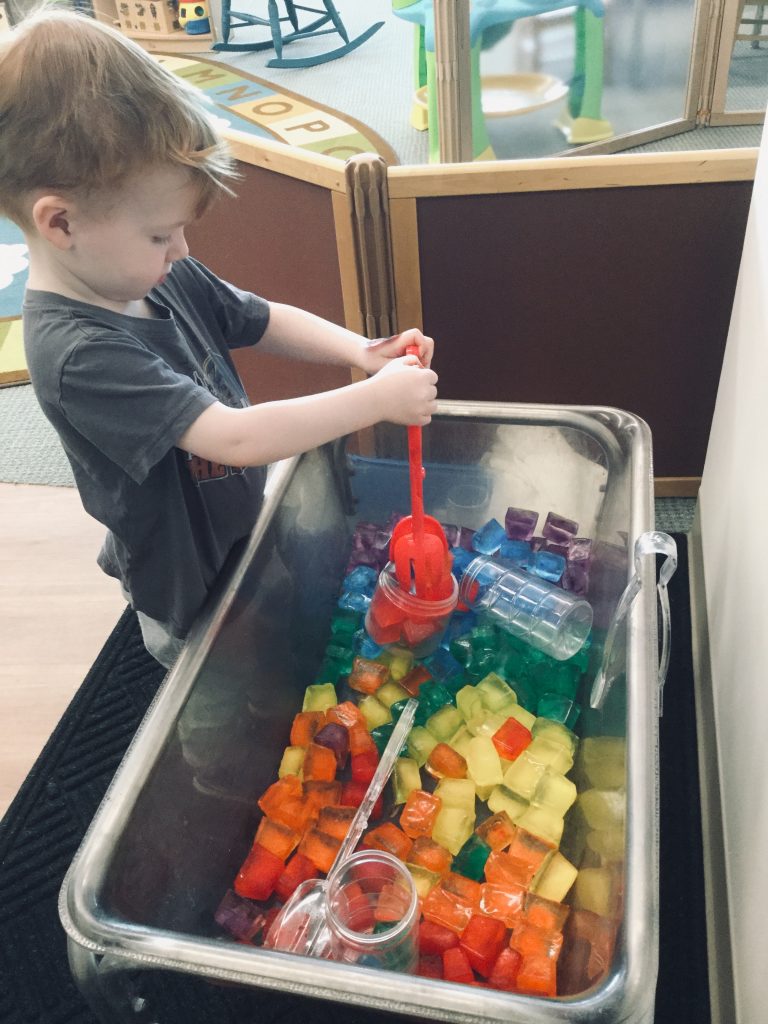Materials:
Star-shaped cookie cutters of various sizes
Styrofoam meat tray
Red, white, and blue tempera paint
White construction paper
Directions: Pour a small amount of each paint color into the meat tray. Tape the construction paper to the table, and set the cookie cutters out for your child to choose from. Choose a cutter yourself and demonstrate how to dip it into the paint, holding the sides so that fingers don’t touch the paint. Make a print and pick up the cutter. Dip it again and make another print. It’s okay if the paint colors start to blend—the effect of the blended colors is quite pleasing. Let your child try it. Often young children will try to rub the cookie cutter all over the paper, rather than make a print and lift it up to make another print. That’s fine, as children need a chance to explore the process and the materials so they can develop their own creative style. Art is always about the process, not the product!



